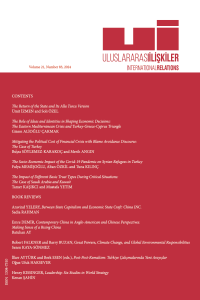Abstract
China’s economy underwent regulatory, structural as well as spatial makeovers since the increase of opening up and reforms in 1978. Intermittent policy interventions have been implemented by the Chinese state to ensure that the economy plays a vital role. Relatedly, the Communist leadership’s economic perspective was shaped by two key attributes: ideology and functionality (pp. 8, 11, 42, 119, 148, 313, 314). From an ideological perspective, the legacy of reforms was as crucial as the equitable principle of Communist rule in China, as both ensured the party’s survival and its control over the state. From a functional perspective, the state’s performance remained an essential indicator for China to achieve economic growth and improve the living conditions of its people. In his book, Between State Capitalism and Economic State Craft: China INC, China expert Aravind Yelery captures the systemic reflections of these transitions, mapping how the state fused growth and encouraged further opening to help China manifest its rise. The book delves into China’s growth models examining how these contradictions are ‘chosen ones’ and how China aims to rally its economic statecraft globally. The central crux is the Communist Party of China’s (CPC) authority retention over the economy by preventing the state from giving up control over important sectors and industries. State-Owned Enterprises (SOEs) played a vital part in achieving this goal in China’s economy, allowing the CPC to control governance. Thus, the chapters are significantly interconnected enlightening on the ascendancy of capitalist approaches in the CPC, exploring how China managed to defy the decline experienced by previous communist regimes. The explanation of SOEs is presented as a key factor in establishing effective domestic economic controls, ultimately enabling China to exert its dominance in global economic affairs.
Keywords
Details
| Primary Language | English |
|---|---|
| Subjects | International Politics |
| Journal Section | Book Review |
| Authors | |
| Early Pub Date | August 15, 2023 |
| Publication Date | August 27, 2024 |
| Published in Issue | Year 2024 Volume: 21 Issue: 83 |


